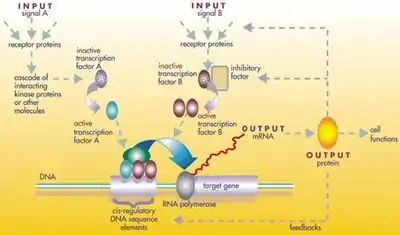Introduction
Selected article -.jpg.webp) The thylacine (Thylacinus cynocephalus) is an example of an extinct species. Extinction is the termination of a taxon by the death of its last member. A taxon may become functionally extinct before the death of its last member if it loses the capacity to reproduce and recover. Because a species' potential range may be very large, determining this moment is difficult, and is usually done retrospectively. This difficulty leads to phenomena such as Lazarus taxa, where a species presumed extinct abruptly "reappears" (typically in the fossil record) after a period of apparent absence. More than 99% of all species that ever lived on Earth, amounting to over five billion species, are estimated to have died out. It is estimated that there are currently around 8.7 million species of eukaryote globally, and possibly many times more if microorganisms, like bacteria, are included. Notable extinct animal species include non-avian dinosaurs, saber-toothed cats, dodos, mammoths, ground sloths, thylacines, trilobites, and golden toads. (Full article...)General images -The following are images from various evolutionary biology-related articles on Wikipedia.
Selected picture - Tyrannosaurus rex Tyrannosaurus rex skull at Palais de la Découverte in Paris. Did you know... -
CategoriesCategory puzzle Select [►] to view subcategories
Evolutionary biology Subfields of evolutionary biology History of evolutionary biology Evolutionary biologists Evolution-related lists Evolutionary biology literature Evolutionary biology terminology Assistance Evolutionary biology concepts Darwinism Digital organisms Evolution of the biosphere Extended evolutionary synthesis Hybridisation (biology) Modern synthesis (20th century) Molecular evolution Most recent common ancestors Non-Darwinian evolution Organisms by adaptation Origin of life Paleontology Evolution by phenotype Population genetics Signalling theory Evolutionary biology societies Evolution by taxon Transitional fossils Vestigial organs Related portalsRelated subjectsTopics in biologyTasks you can do
Related topicsWikiProjectsWikiProjects connected with biology:
A complete list of scientific WikiProjects can be found here. See also Wikispecies, a Wikimedia project dedicated to classification of biological species. Associated WikimediaDiscover Wikipedia using portals
|












![Image 12A covalent adduct between the metabolite of benzo[a]pyrene, the major mutagen in tobacco smoke, and DNA (from Mutation)](../I/Benzopyrene_DNA_adduct_1JDG.png.webp)



.jpg.webp)


.jpg.webp)


_1_by_N._A._Naseer.jpg.webp)




_nyererei_male.jpg.webp)




